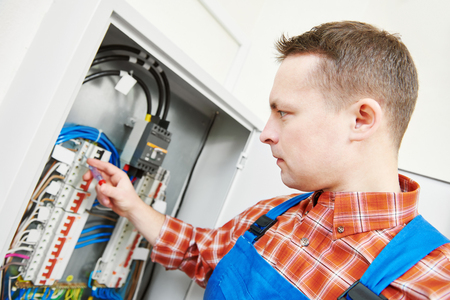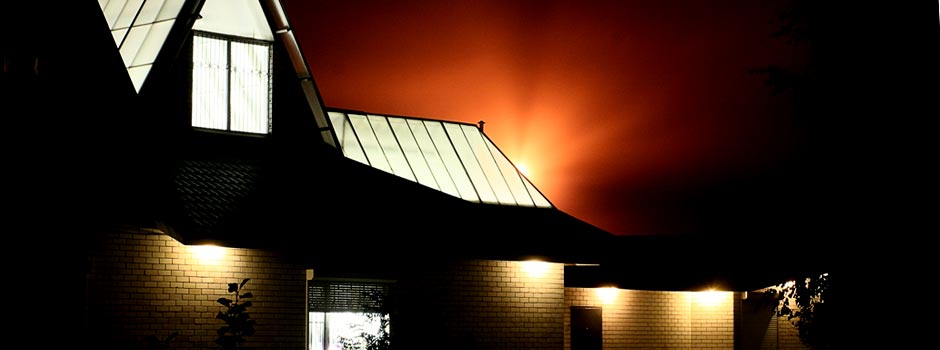 When Thomas Edison invented the light bulb it was an idea that was so brilliant it was in danger of catching fire. Literally. This quickly led to another invention: fuse boxes. Fuse boxes and their more recent replacements, breakers and breaker boxes, ensure that we don’t get a dangerous amount of a good thing. That “good thing” being, of course, electricity.
When Thomas Edison invented the light bulb it was an idea that was so brilliant it was in danger of catching fire. Literally. This quickly led to another invention: fuse boxes. Fuse boxes and their more recent replacements, breakers and breaker boxes, ensure that we don’t get a dangerous amount of a good thing. That “good thing” being, of course, electricity.
If you live in an older home, you may have an actual fuse box with good old-fashioned screw-in fuses. Since the 1960s, breaker boxes or breaker panels — aka distribution boards and panelboards — have come to replace fuse boxes. Their essential function is the same– to interrupt or break the flow of electricity when necessary.
The Basics
Let’s get right down to the basics. The main component of a fuse is a metal wire or strip that melts when too much current flows through it, thereby interrupting the current. Once a fuse has done its job, it must be replaced or rewired, depending on the type.
These days, the only fuses most people put in their hands are the “blade” fuses found in our vehicles. We occasionally need to replace them by sliding the old one out and a new one in. Easy-out, easy in– in theory, at least (except for the contortions you have to perform under your car’s dash just to replace that one little windshield wiper fuse).
Whether used in your car, your appliances, or your older home’s fuse box, a fuse will never allow more current to pass through than what it’s rated for. Again, circuit breakers perform the same function. Fuses “blow,” breakers “trip” when too much current passes through for too long a period of time. Circuit breakers aren’t safer compared to the old fuse boxes but they are more convenient. They can simply be reset after they trip instead of having to be replaced or rewired.
Older Homes
If you live in an older home with an old fuse box (that is, a panel with actual fuses), you need one or two screw type fuses on hand to replace the odd one that blows. And indeed, this should happen only on the odd occasion. Old fuse boxes, typically 60 amps, are safe to use and fuse replacement isn’t dangerous. The problem is that many (if not most) old fuse boxes, as well as some breaker panels, are inadequate for the task. They weren’t designed to handle the heavy demand placed on the breaker boxes of appliance-filled modern homes.
Even the 100 amp breaker boxes that replaced the old 60 amp fuse boxes are often lacking when it comes to the number of circuits required in homes today. This is why the boxes in newer homes are typically rated at 200 amps. Today’s kitchens often have one circuit for the dishwasher, one for the garbage disposer, two for the countertop outlets, one for the lights, and another for the microwave and fridge. The modern kitchen alone can require as many circuits as that of an entire older home!
Whether you live in a home with an old fuse box one with a newer 200 amp panel, when fuses constantly blow or breakers regularly trip, it’s a red flag. Try to distribute the load more evenly throughout your home by separating the low-power loads between different circuits by connecting them to separate outlets. Higher loads, such as dryers, space heaters, microwaves and other kitchen appliances should be on their own circuits if possible.
Once you’ve separated the loads, you shouldn’t need to reset a breaker or replace a fuse more than once.
Be safe, give us a call.
For safety sake, don’t let it slide. If you’re tempted to do any type of electrical work yourself, please read our recent blog, The Dangers of Do-It-Yourself Electrical. Fuse boxes and breaker panels are best left to a professional electrician.
Call us at AJ’s Electrical Service and Repair: 604-359-1915. You can also email us at This email address is being protected from spambots. You need JavaScript enabled to view it. or complete our online contact form. We’ll check to see whether your breaker panel needs upgrading. If it does, you can count on us to do it safely and efficiently.








 1
1 2
2 3
3 3
3

